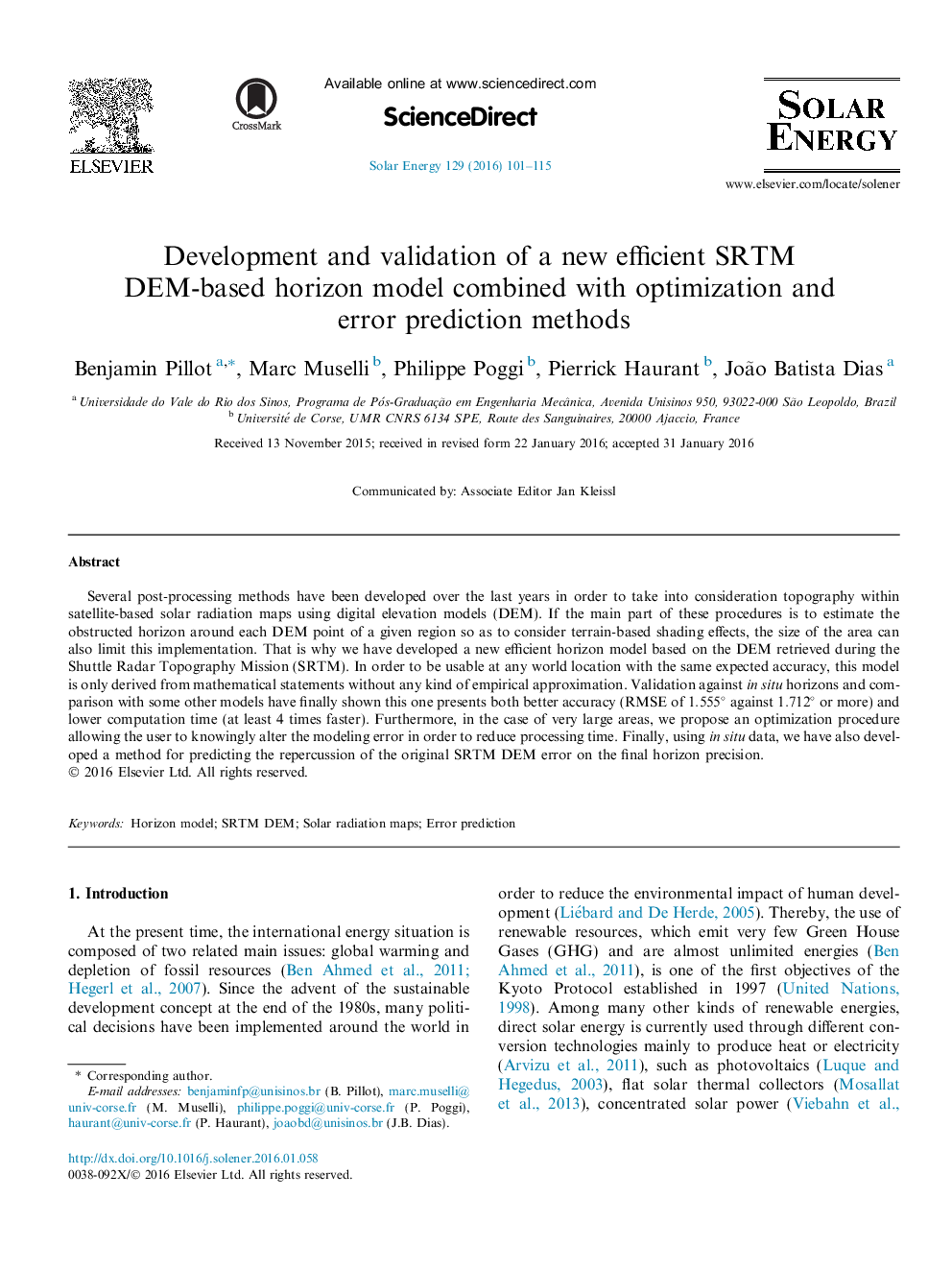| Article ID | Journal | Published Year | Pages | File Type |
|---|---|---|---|---|
| 7937180 | Solar Energy | 2016 | 15 Pages |
Abstract
Several post-processing methods have been developed over the last years in order to take into consideration topography within satellite-based solar radiation maps using digital elevation models (DEM). If the main part of these procedures is to estimate the obstructed horizon around each DEM point of a given region so as to consider terrain-based shading effects, the size of the area can also limit this implementation. That is why we have developed a new efficient horizon model based on the DEM retrieved during the Shuttle Radar Topography Mission (SRTM). In order to be usable at any world location with the same expected accuracy, this model is only derived from mathematical statements without any kind of empirical approximation. Validation against in situ horizons and comparison with some other models have finally shown this one presents both better accuracy (RMSE of 1.555° against 1.712° or more) and lower computation time (at least 4 times faster). Furthermore, in the case of very large areas, we propose an optimization procedure allowing the user to knowingly alter the modeling error in order to reduce processing time. Finally, using in situ data, we have also developed a method for predicting the repercussion of the original SRTM DEM error on the final horizon precision.
Keywords
Related Topics
Physical Sciences and Engineering
Energy
Renewable Energy, Sustainability and the Environment
Authors
Benjamin Pillot, Marc Muselli, Philippe Poggi, Pierrick Haurant, João Batista Dias,
